All products featured are independently chosen by us. However, SoundGuys may receive a commission on orders placed through its retail links. See our ethics statement.
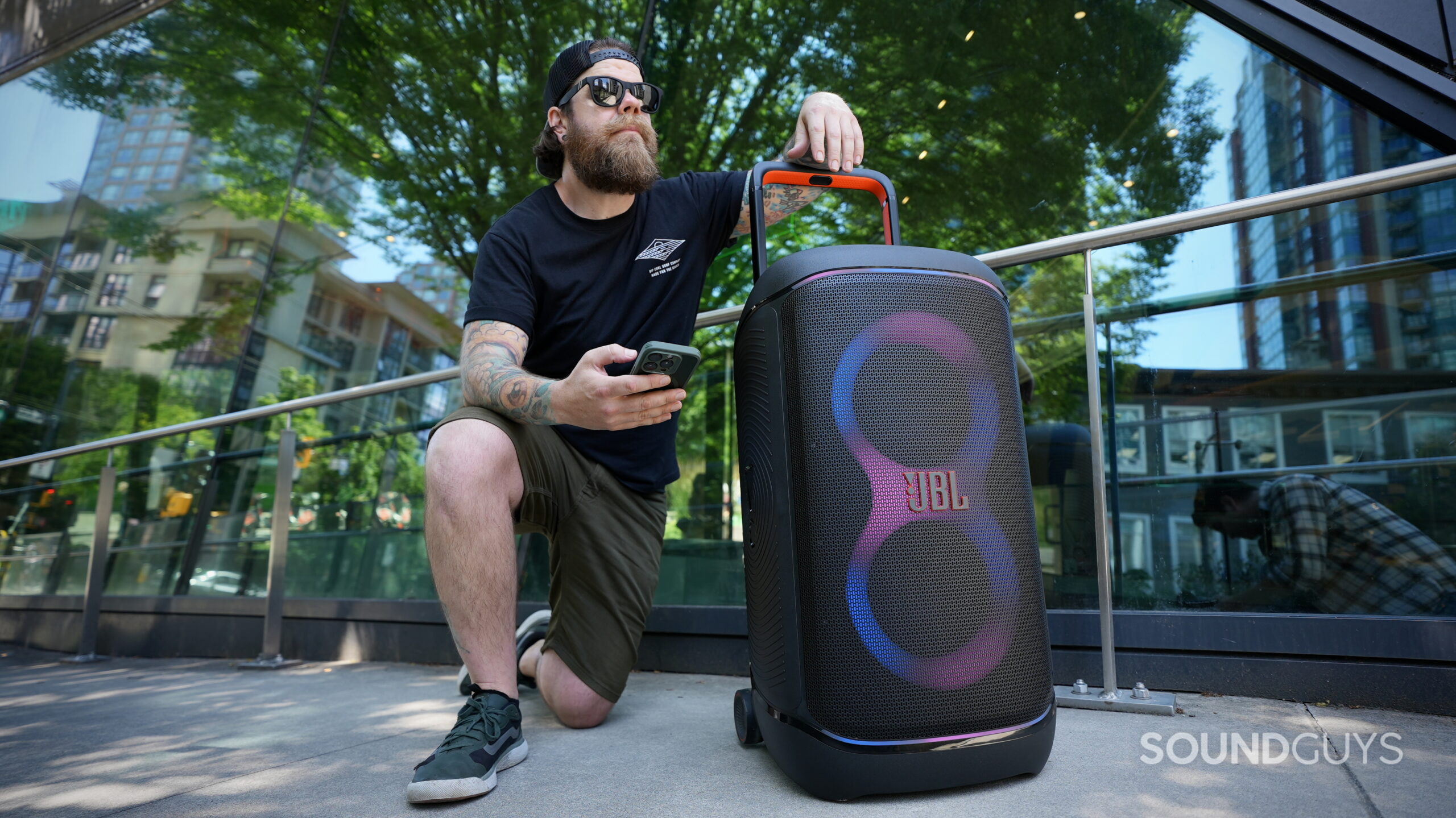
JBL PartyBox 520 review: The sweet spot in JBL’s PartyBox lineup?
July 4, 2025
JBL PartyBox 520
The JBL PartyBox 520 fills the gap between the smaller PartyBox Stage 320 and the massive PartyBox 710. It brings 400W of output, swappable battery packs, and a flashy, customizable light show to your next event. There’s nothing subtle about this thing. Weighing in at over 56lbs, the real question is whether it’s worth hauling to your next backyard bash. Let’s crank it up and find out in this JBL PartyBox 520 review.
This article was published on July 4th, 2025, and this is the first version of the article. Updates will follow as the market changes.
What I like about the JBL PartyBox 520
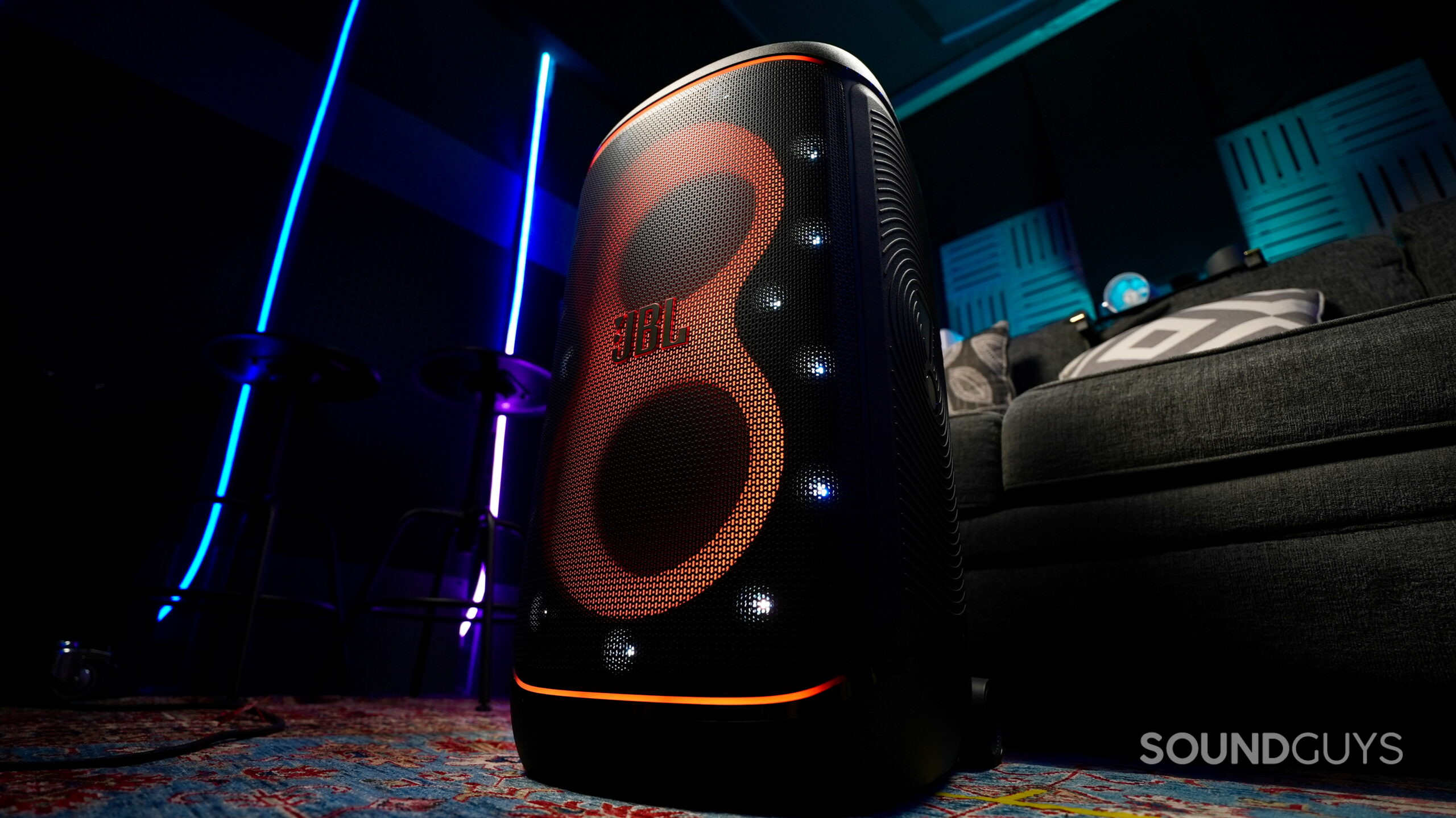
There’s no two ways about it. The JBL PartyBox 520 is a beast of a portable Bluetooth speaker. It weighs a little over 56lbs, but thanks to the telescopic handle and built-in wheels, it’s still pretty easy to roll around the house. Just make sure to lift with your knees if you’re setting it up on a table or chair. Otherwise, it sticks to the familiar PartyBox design language, with a tough plastic exterior, an IPX4 rating to handle splashes or light rain, and of course, a variety of lighting effects behind its metal grille.
Its control layout is identical to that of the PartyBox 320, with physical knobs for playback, volume, and light show effects, along with the usual bass boost, Auracast, and Bluetooth buttons. You also get the same microphone controls and a few DJ effect buttons. Around back, I was stoked to see some new connection options that were lacking from the Stage 320, which really upped the versatility of this speaker.
While the Stage 320 offers dual 1/4-inch inputs on the back, the PartyBox 520 takes it further with dual XLR and 1/4-inch combo jacks. That opens up more flexible connection options, so you can still plug in a guitar, but also hook up something like a DJ console. The 320 also uses an outdated USB-A port, whereas the 520 now includes a USB-C port that pulls double duty. It lets you charge your phone and supports audio playback, including lossless formats.
When it comes to battery life, JBL claims up to 15 hours of playback on a single charge, which is about three hours less than the Stage 320 offers. But let’s not forget, the 520 is a massive speaker pushing 400 watts, and that takes a lot of juice, so the shorter battery life makes sense. Luckily, you can always run it on AC power, or if you plan to go off-grid, grab a second JBL battery to keep the party going. It’s nice to have options.
There are a ton of features in the JBL PartyBox app, so I definitely recommend checking it out. You can customize your light show with different colors and patterns, fine-tune the sound with a 7-band adjustable EQ, and even add effects like reverb to a microphone. The app also lets you sync multiple PartyBoxes using the PartyTogether feature to take your get-together up a notch or three. Just keep in mind that if you want true stereo sound, you’ll need to pair two of the same model.
Yadda yadda yadda, so how does the PartyBox 520 sound? With 400 watts of power, it gets seriously loud, which is perfect for outdoor listening. The JBL Signature EQ preset is a solid starting point, but I’m always quick to dive into the 7-band EQ to fine-tune things. I knew there was more low-end potential, and boosting a few of those lower frequencies really made the speaker come alive.
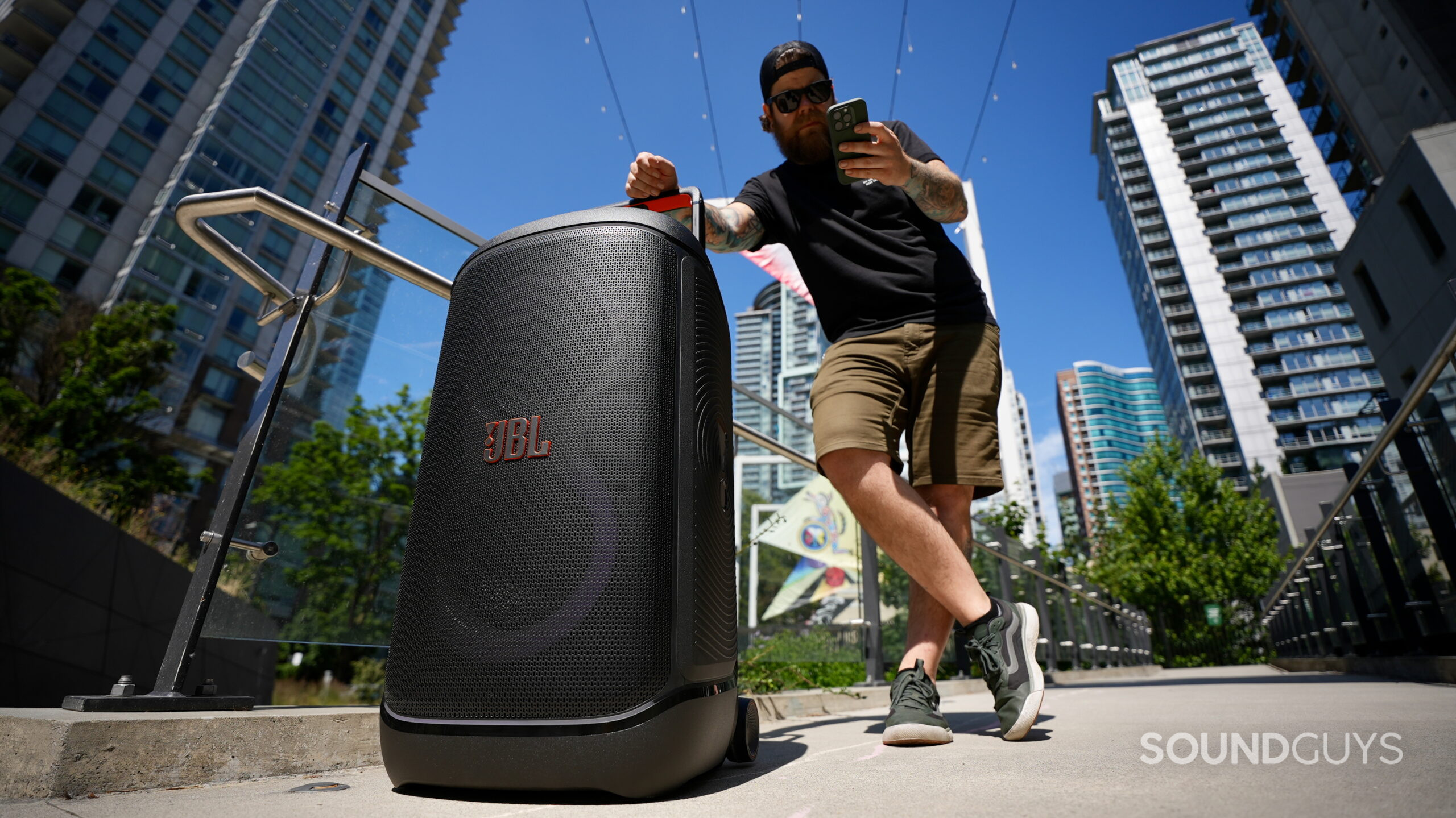
Listening to tracks like “Brass Monkey” by The Beastie Boys, you can feel that synthesized low-end bass hit you in the chest. I don’t love using the term “chest-thumping,” but indoors, it definitely applies with this track. The same goes for the kick drum in rock staples like “You Shook Me All Night Long” by AC/DC. Even a tune like “You Can Call Me Al” by Paul Simon—which isn’t exactly known for heavy bass—delivers a steady low-end groove from the bass guitar with strong resonance, all while keeping the treble clear enough to make out Paul Simon’s vocals without any trouble. If you’re not fully sold on the out-of-the-box tuning, the 7-band EQ makes it easy to dial in a sound you’ll like.
What I don’t like about the JBL PartyBox 520
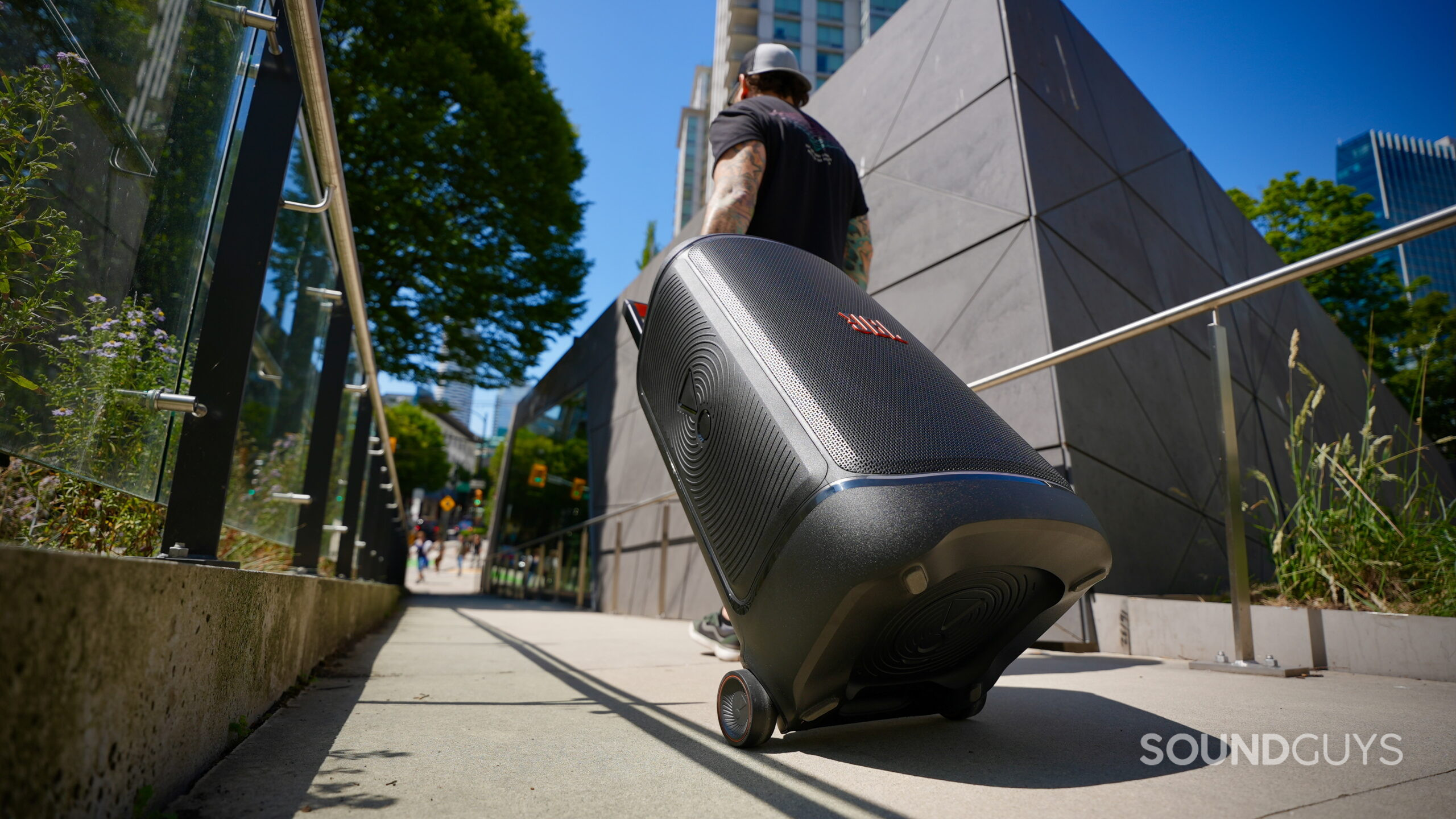
There’s not much to complain about with the JBL PartyBox 520. Sure, it’s heavy, and yes, it’s pricey, but that’s the cost of entry if you want a portable speaker that pumps out plenty of volume and bass and even throws in a few party tricks.
One thing that bugged me during testing was the rubber flap covering the rear inputs. It’s meant to protect against water, dust, and debris, but it kept popping open whenever I moved the speaker by the handle, especially when rolling it over concrete. The seal feels a little too loose and could definitely be tighter. This might be a one-off issue with our unit, but it’s worth keeping an eye on. I’d also love to see two side handles added to make carrying this thing even easier.
Should you buy the JBL PartyBox 520?
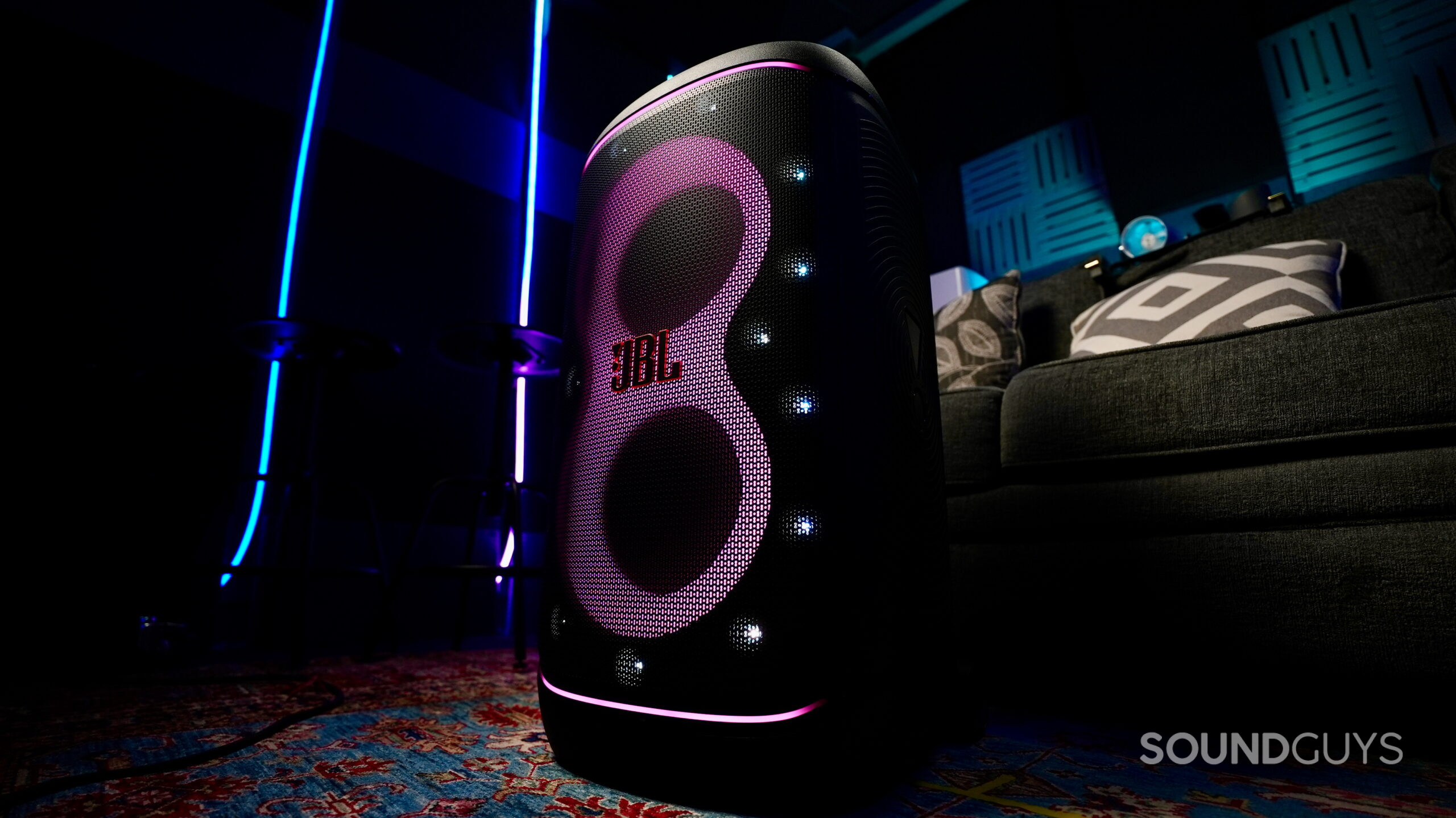
If you’ve got the cash and you’re after a quality party speaker for backyard BBQs, basement jams, or that next tailgater before the big game, the PartyBox 520 won’t disappoint. It’s fairly portable thanks to the handle and wheels, gets plenty loud, especially for outdoor listening in group events, and looks great doing it with its built-in light show. The XLR inputs are a welcome addition, making the 520 even more flexible. Just don’t blame me when your Aunt Linda belts out her latest rendition of “Don’t Stop Believin’” after your next Thanksgiving dinner.
That said, the PartyBox 520 isn’t cheap. If you’re looking to party on a tighter budget, consider its smaller sibling, the JBL PartyBox Stage 320 ($599.95 at Amazon). Just keep in mind it doesn’t have XLR inputs. Another great, affordable option is the Soundcore Rave 3S. It still delivers a slick light show, 200 watts of output, and even comes with two wireless mics and a unique AI vocal remover that strips vocals from your favorite tracks. Snag one for $349.99 at Amazon.
JBL PartyBox 520 review: FAQs
Pairing the JBL PartyBox 520 is easy and follows the usual steps.
1. Power on the device and press the Bluetooth button
2. Open Bluetooth settings on your phone
3. Select "PartyBox 520"
4. Download and install the JBL PartyBox app for further control.
Yes. The PartyBox 520 can connect to other PartyBox speakers via the PartyTogether feature in the JBL PartyBox app, or via Auracast to other JBL Auracast-supported speakers like the Charge 6 and Flip 7.
The JBL PartyBox 520 can only be connected to your TV if it offers a Bluetooth connection or USB-C audio out.
The PartyBox 520 does not come with a microphone, but can support up to two microphones at a time thanks to its dual XLR - 1/4" combo jacks.
Thank you for being part of our community. Read our Comment Policy before posting.
